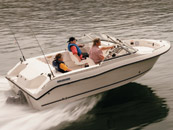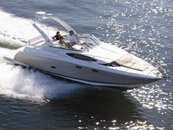Maintaining your boat and even doing small repairs yourself isn’t as tough as you might think—a little diligence and a lot of common sense can definitely pay off in the long run.
Cleanliness
The first item on the agenda is washing your boat regularly. Yes, we know that swabbing the decks can be a hassle, but you’ve got a lot of money tied up in your boat, so why not take care of it?
A long-handled boat brush can make boat washing a great deal easier than scrubbing acres of hull sides by hand, as can one of those car-washing spray wands available from nearly any auto parts store.
Use soaps and cleaners made especially for boats to avoid damaging your boat’s finish.
If you go boating in saltwater, make it a point to rinse your boat thoroughly with fresh water to remove any salt residue.
It’s a proven fact that a boat with a clean hull bottom is more fuel-efficient than a hull that’s fouled with algae or other aquatic scum.
Oil
With the proliferation of those quickie oil change shops, most of us are pretty good about changing the oil in our cars and trucks. Just pull in, and 20 minutes later you’re back on the road.
Unfortunately, this concept hasn’t caught on very well in the marine industry. You’ve either got to change your boat’s oil yourself or take it to your local boat dealer.
Four-stroke outboards, inboards, and stern drive boats require regular oil changes. The duration between oil changes varies by manufacturer, but a good rule of thumb is to change the oil at least once a year or every 100 hours of operation (+/-).
Changing the oil in your boat’s engine is actually easier (in most cases) than changing the oil in your car. Similar process: start the engine, let it warm up for a few minutes, turn the engine off, drain the old oil, change the filter, put the drain plug back in, and fill the engine with new oil.
Do not use automotive oil in your boat—this isn’t the place to be cheap. Use only name-brand marine oil—your boat’s engine works much harder than the engine in your car, and automotive oil doesn’t have the chemical composition necessary for a marine engine.
Propeller (Outboard & Stern Drive)
As part of your pre-launch routine, use a deep well socket and ratchet/breaker bar to ensure that the propeller nut hasn’t loosened up and is tightened securely.
Remove the propeller several times during the season to make sure that discarded fishing line hasn’t become wrapped around the propeller shaft. This might seem trivial, but fishing line will cut into the propshaft seal in a surprising short time, allowing oil to leak out of the gearcase—and water to enter the gearcase.
If you discover a wad of old fishing line on the propshaft, take your boat to your local marine dealer, and ask them to inspect the gearcase for you. (Other than changing the gear oil, gearcase service is not a do-it-yourself job).
While you have the propeller off, visually inspect it for nicks, dents and other signs of underwater encounters. It’s OK if your prop is missing some paint, but send it out for repairs if you find any evidence of impact.
Now put a liberal amount of waterproof marine grease on the propeller shaft, and re-install the propeller (and related hardware) in the same order that you took it off. Don’t forget to tighten the propeller nut to the manufacturer’s specifications.
Do It Yourself
Obviously, space won’t permit explaining every maintenance or repair procedure—there are plenty of instructional materials available that cover most do-it-yourself jobs in great detail.
Don’t be intimidated by working on your boat—take your time—you’ll be surprised at how well you can figure things out on your own if you try.


